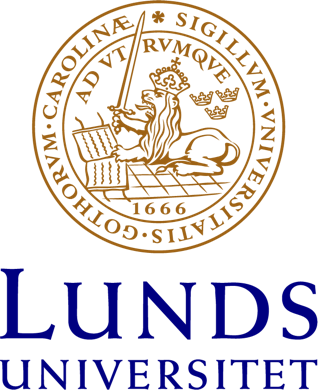Sökresultat
Filtrera
Filtyp
Din sökning på "*" gav 533928 sökträffar
Framtid handlar om livet självt
Instrumentalundervisning och "lotsning" - ett metodisk problem
Fem politiska kliv
Probabilistic recognition of human faces from video
Most present face recognition approaches recognize faces based on still images. In this paper, we present a novel approach to recognize faces in video. In that scenario, the face gallery may consist of still images or may be derived from a videos. For evidence integration we use classical Bayesian propagation over time and compute the posterior distribution using sequential importance sampling. Th
'Time is flying' : lyrical and historical time in the poetry of Percy Bysshe Shelley
International Monetary Interdependence in the New Century
Even though each country is trying to follow its own monetary policy, it is affecting other countries which have, trade and capital flow links with each other. hence, the monetary policy of each individual country has an impact at the global level. The study analyses this interdependence. More specifically, this book discusses the emerging international financial structure, the liquidity crises, f
Super-resolution x-ray phase-contrast and dark-field imaging with a single 2D grating and electromagnetic source stepping
Here we report a method for increased resolution of single exposure three modality x-ray images using super-resolution. The three x-ray image modalities are absorption-, differential phase- contrast-, and dark-field-images. To create super-resolution, a non-mechanically movable micro- focus x-ray source is used. A series of almost identical x-ray projection images is obtained while the point sourc
Ge funktionshindrade en chans på högskolan
Kulturskolan kräver rätt utbildade lärare
Tid, gemenskap och uthållighet
Metoden ByggF-PST : Tillämpning av ByggaF på tillverkning av prefabricerade småhus i trä. Version 1.0
Metoden som presenteras i detta dokument är en tillämpning av ByggaF påprefabricerad småhustillverkning av hus med träbaserad stomme kallad:”ByggaF för Prefabricerade småhus med trästomme”, hädanefter omnämnd somByggaF-PST. ByggaF-PST är en metod som säkerställer, dokumenterar ochkommunicerar fuktsäkerheten i hela byggprocessen, från planering tillbruksskede. Metoden innebär ett arbetssätt för att
Anafylaxi. Rekommendationer för omhändertagande och behandling. : Utarbetat på uppdrag av Svenska Föreningen För Allergologi (SFFA) 2009.
Attitudes matter : Perceptions towards welfare work with migrants in Swedish welfare organisations
This dissertation examines Swedish welfare workers’ attitudes towards migrants and migration, their perceptions of welfare work with migrants and organisational working conditions. The dissertation is based on original survey data capturing attitudes and views of welfare workers in two Swedish welfare organisations. The thesis’ conceptual framework draws on three perspectives: street-level bureauc
Inequalities in the economic consequences of depression and anxiety in Europe : a systematic scoping review
BACKGROUND: Depression and anxiety are associated with adverse outcomes in educational achievements and economic performances. Moreover, the prevalence of these disorders is unequally distributed among different population subgroups. Our objective is to investigate whether the economic consequences of depression and anxiety differ between population subgroups of different gender, socioeconomic sta
Experimental Philosophy, Ethnomethodology, and Intentional Action : A Textual Analysis of the Knobe Effect
In "Intentional action and side-effects in ordinary language” (2003), Joshua Knobe reported an asymmetry in test subjects’ responses to a question about intentionality: subjects are more likely to judge that a side effect of an agent’s intended action is intentional if they think the side effect is morally bad than if they think it is morally good. This result has been taken to suggest that the co
Defending popular sovereignty: discursive conflict in French and Swedish parliamentary debates on immigrant voting rights (1968-2017)
Through a discourse analysis of French and Swedish legislative debates from 1968 to 2017, this article examines how actors challenge and reinforce dominant ideas about the link between nationality and political rights. We argue that the broader political culture influences which discursive strategies—or “frames”—are more likely to structure parliamentary debates in different national contexts. How
Single-Cell Approaches for Understanding Morphogenesis Using Computational Morphodynamics
In multicellular organisms cells grow, divide and adopt different fates, resulting in tissues and organs with specific functions. In recent years, a number of studies have brought quantitative knowledge about how these processes are orchestrated, shedding new light on cells as active and central players in morphogenesis. We explore recent advances in understanding plant morphogenesis from a quanti
Cell type boundaries organize plant development
In plants the dorsoventral boundary of leaves defines an axis of symmetry through thecentre of the organ separating the top (dorsal) and bottom (ventral) tissues. Although thepositioning of this boundary is critical for leaf morphogenesis, how the boundary is established andhow it influences development remains unclear. Using live-imaging and perturbation experimentswe show that leaf orientation,
The Development of Sensorimotor Cognition in Common Ravens (Corvus corax) and its Comparative Evolution
Evolution involves developmental change. Species comparisons play an important role in comparative cognition because they can uncover common patterns and shared principles in cognitive evolution. Developmental studies reveal foundational elements of cognitive abilities and how they are constructed and integrated. Sensorimotor cognition is such a key element that forms the foundation for later-deve
